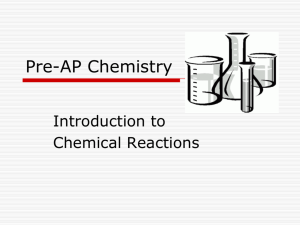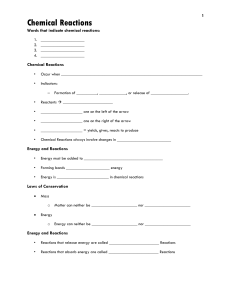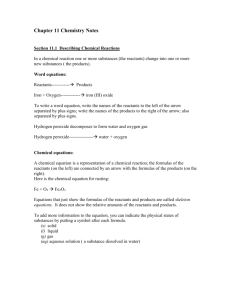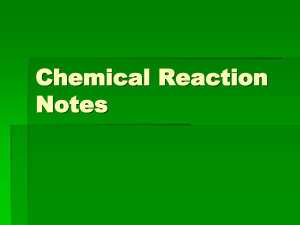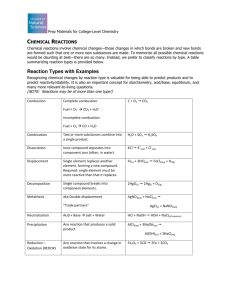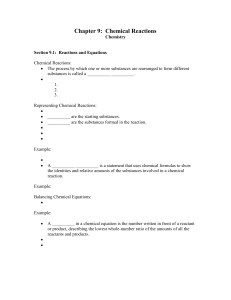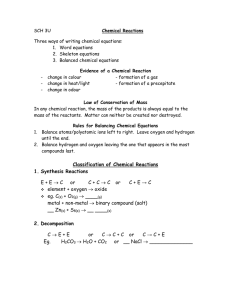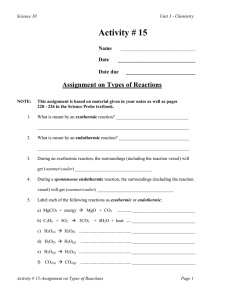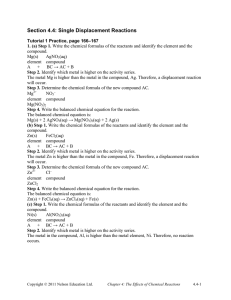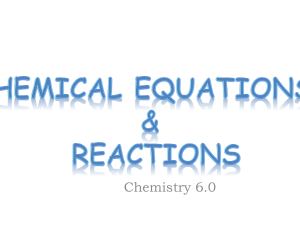File
advertisement
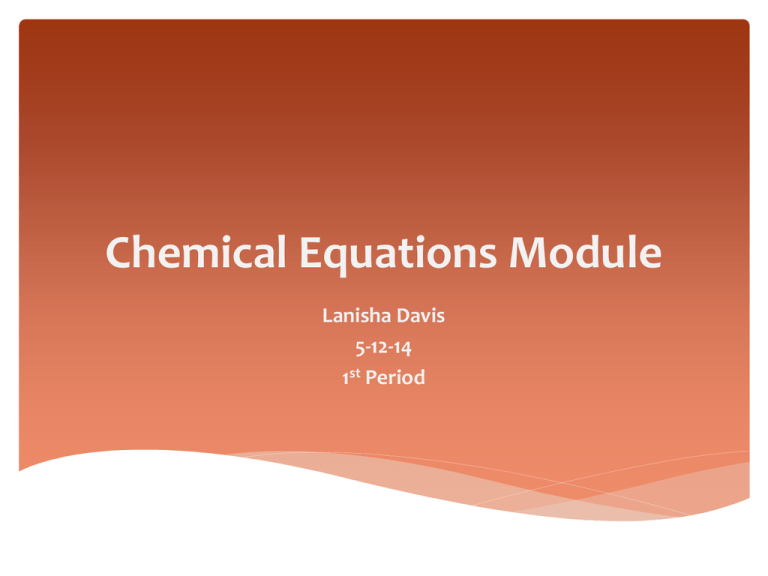
Chemical Equations Module Lanisha Davis 5-12-14 1st Period What Is A Chemical Equation? Chemical Equation- a statement that uses chemical formulas to show the identities and relative amounts of the substances involved in a chemical reaction. Parts of an Equation Reactants The starting substances, which combine in the reaction. (Formulas must be correct.) Products The substances that are formed by the reaction. (Formulas must be correct.) Found between reactants and products, means "reacts to form." Used between reactants and products to show that the equation is not yet balanced. Placed after the formula of a product that is a gas. Placed after the formula of a product that is an insoluble solid, also called a precipitate. Physical State Indicates the physical state of the substance whose formula it follows. (g) Indicates that the substance is a gas (l) Indicates that the substance is a liquid (s) Indicates that the substance is a solid (aq) Means that the substance is in aqueous (water) solution Parts of An Equation Coefficients The numbers placed in front of the formulas to balance the equation. Conditions Words or symbols placed over or under the horizontal arrow to indicate conditions used to cause the reaction. Heat is added hv Light is added elec Electrical energy is added Synthesis Reaction Reaction in which 2 or more substances react to produce a single product Form A +B AB EX:8 Fe + S8 ---> 8 FeS Decomposition Reaction Occurs when a compound breaks up into the elements or simpler compounds Form AB A+B EX: 2 H2O ---> 2 H2 + O2 Single Replacement Reaction Occurs when one element replaces another in a compound Form: A+ BC AC + B EX: Mg + 2 H2O ---> Mg(OH)2 + H2 Double Replacement Reaction Occurs when a metal replaces a metal in a compound and a non metal replaces a non metal in a compound Form: AB + CD AD + CB EX: Pb(NO3)2 + 2 KI ---> PbI2 + 2 KNO3 Combustion Reactions Occurs when a hydrocarbon or other elements reacts with oxygen gas Form: C10H8 + 12 O2 ---> 10 CO2 + 4 H2O Sample Problems & Answers 1) NaOH + KNO3 --> NaNO3 + KOH double displacement 2) CH4 + 2 O2 --> CO2 + 2 H2O combustion 3) 2 Fe + 6 NaBr --> 2 FeBr3 + 6 Na single displacement 4) CaSO4 + Mg(OH)2 --> Ca(OH)2 + MgSO4 double displacement 5) Pb + O2 --> PbO2 synthesis 6) Na2CO3 --> Na2O + CO2 decomposition Balancing Equations First to balance equations you have to look at the equations and see is it already balanced. You do this by seeing how many elements there are on each side of the equation. Then make all the same elements equal by using COEFFIENCTS! Balancing Video Video Video Continue Balancing Instructions Finally Balanced
